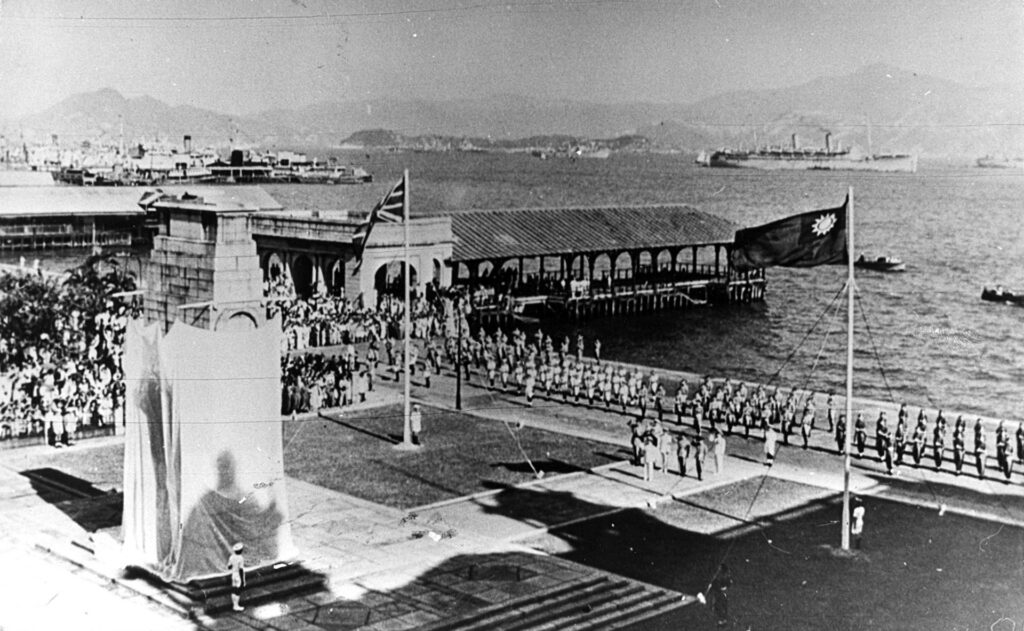Sketches of Hong Kong, 1940
Posted: April 19th, 2025 | No Comments »Three Sketches of Hong Kong By RAF Corporal E A Silverstone Aircraft Fitter at Kai Tak Airfield Kowloon, c.1940…

All things old China - books, anecdotes, stories, podcasts, factoids & ramblings from the author Paul French
Three Sketches of Hong Kong By RAF Corporal E A Silverstone Aircraft Fitter at Kai Tak Airfield Kowloon, c.1940…

With the launch last month of Destination Macao (#3 in the series) you can now buy the trilogy…. Destination Shanghai, Destination Peking and Destination Macao…. which, by the way, is a grand total of over 1,000 pages of old China stories!
You can of course purchase them from Bookazine stores in Hong Kong, Livraria Portuguesa in Macao and (soon) many indie bookstores globally, but if you want to get all 3 in one discounted bundle Blacksmith Books can oblige – click here for the bundle
Emily Feng’s Let Only Red Flowers Bloom – Identity and Belonging in Xi Jinping’s China (Penguin)…
An intimate, deeply reported investigation into the battle over identity in China, chronicling the state oppression of those who fail to conform to Xi Jinping’s definition of who is “Chinese,” from an award-winning NPR correspondent.
The rise of China and its great power competition with the U.S. will be one of the defining issues of our generation. But to understand modern China, one has to understand the people who live there – and the way the Chinese state is trying to control them along lines of identity and free expression.
In vivid, cinematic detail, Let Only Red Flowers Bloom tells the stories of nearly two dozen people who are pushing back. They include a Uyghur family, separated as China detains hundreds of thousands of their fellow Uyghurs in camps; human rights lawyers fighting to defend civil liberties in the face of mammoth odds; a teacher from Inner Mongolia, forced to make hard choices because of his support of his mother tongue; and a Hong Kong fugitive trying to find a new home and live in freedom.
Reporting despite the personal risks, journalist Emily Feng reveals dramatic human stories of resistance and survival in a country that is increasingly closing itself off to the world. Feng illustrates what it is like to run against the grain in China, and the myriad ways people are trying to survive, with dignity.
Spring 1925, the weather’s getting warmer and Wallis is living at #4 Shih Chia (Shijia) Hutong with Herman and Kitty Rogers. Here she’s sitting in the courtyard reading a newspaper (Peking News, Peking Daily News, Peking & Tientsin Times?) on some nice rattan furniture….. And is that an ash tray on the other chair?
Her Lotus Year: China, the Roaring Twenties and the Making of Wallis Simpson is available everywhere in hardback, e-book and audiobook now…
If you haven’t gotten along to see Shanghai Dolls yet I urge you to…. details/tickets etc here…
When two penniless actresses meet in Shanghai at auditions for Ibsen’s A Doll’s House, they quickly become inseparable. But as political upheaval rips through China, their tumultuous friendship will alter not only the course of their lives, but the course of history. One will become China’s first female director. The other, the architect of the Cultural Revolution.
Amy Ng’s newest play looks at the untold story of two of the most influential women in Chinese history – Madame Mao and Sun Weishi – and how the personal truly is political.
And some nice background music as the audience wait for the play to start….
The literary greats of China, Macao and Portugal feature on the windows of Macao’s best bookshop Livraria Portuguesa…..
Talking to Phil Craig on the Scandal Mongers podcast about 1945 in China/Hong Kong & the fate of empire – the quiet dissolution of International Shanghai & the Treaty Ports vs the reestablishment of British rule in Hong Kong – Churchill waved the former through but freaked out about the chances of the latter not happening – click here

Heads Up: i’ll be at the Felixstowe Book Festival talking about Her Lotus Year – 28/06/2025 – the amazing thing about UK lit fests is undoubtedly the incredible venues – here Felixstowe’s Harvest House – click here for tickets and more details